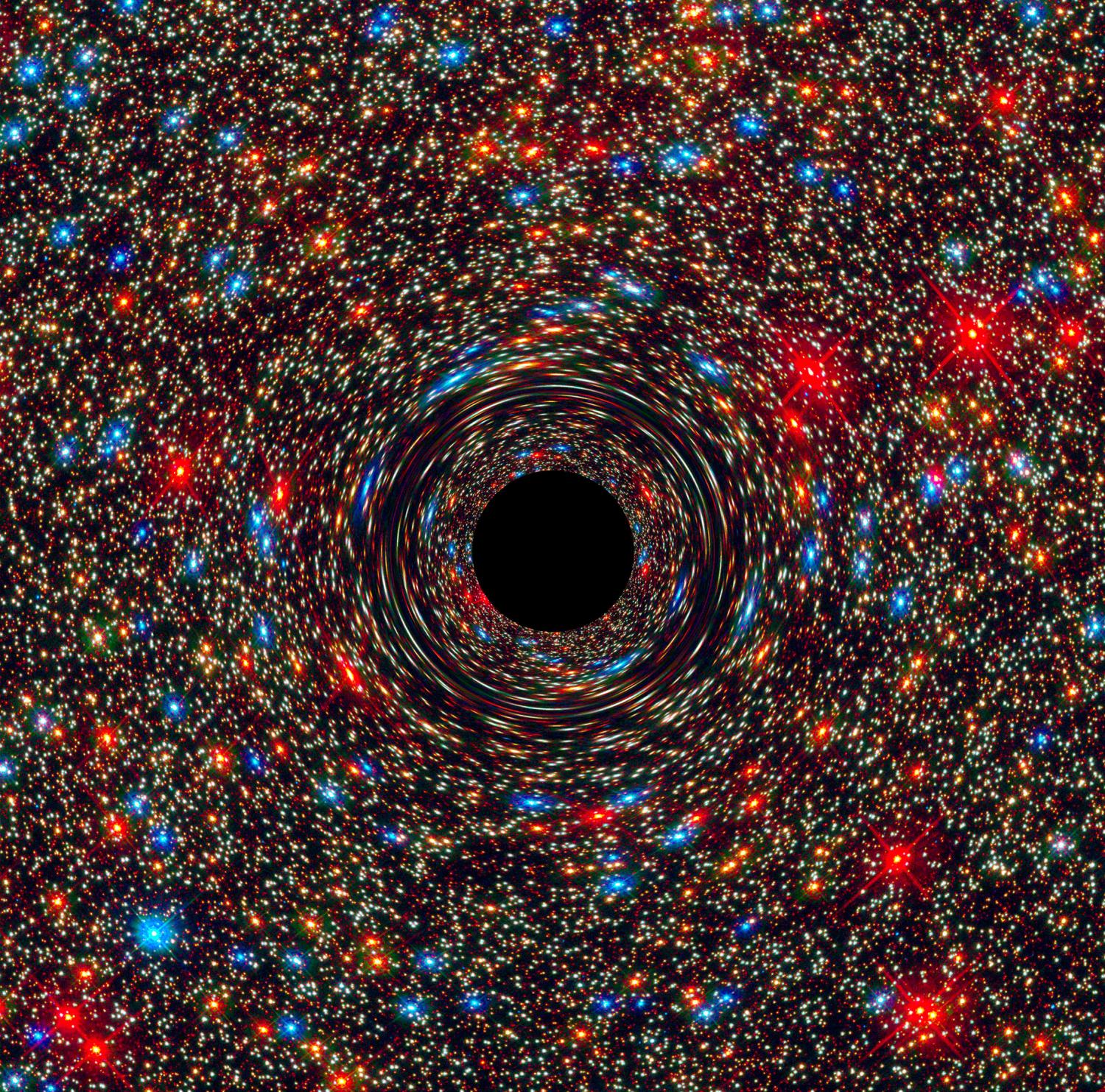 Credit: NASA, ESA, and D. Coe, J. Anderson, and R. van der Marel (STScI)
Credit: NASA, ESA, and D. Coe, J. Anderson, and R. van der Marel (STScI)
Astronomers used the Hubble Space Telescope and the Gemini telescope, to detect a supermassive black hole that weighs 17 billion Suns and is located in the center of an elliptical galaxy, named NGC 1600. The galaxy belongs to a group of about 20 galaxies, roughly 200 million light years away from earth.
Heaviest black holes have been detected in the past, with the largest one weighing 21 billion Suns. These monster black holes, though, are known to exist in galaxy clusters with more than 1,000 galaxy members. Therefore, scientists were surprised to find one in an average sized galaxy, like the NGC 1600. This may indicates that such enormous black holes are more common than we think.
Based on previous studies, astronomers have developed a correlation between a black hole mass and the mass of its host galaxy’s central bulge of stars. The newly discovered black hole is, however, 10 times more massive than astronomers had predicted for a galaxy of this mass. One hypothesis is that the enormous size of the black hole is due to a merger with another black hole long ago. These mergers can occur when two galaxies collide, something that was often in the past when the universe was much smaller than its current size.
Publication: Thomas et al. 2016
Source: Astronomy.com
